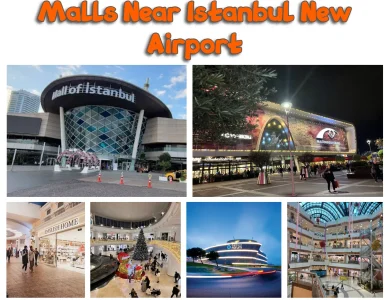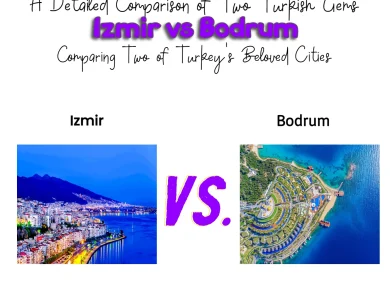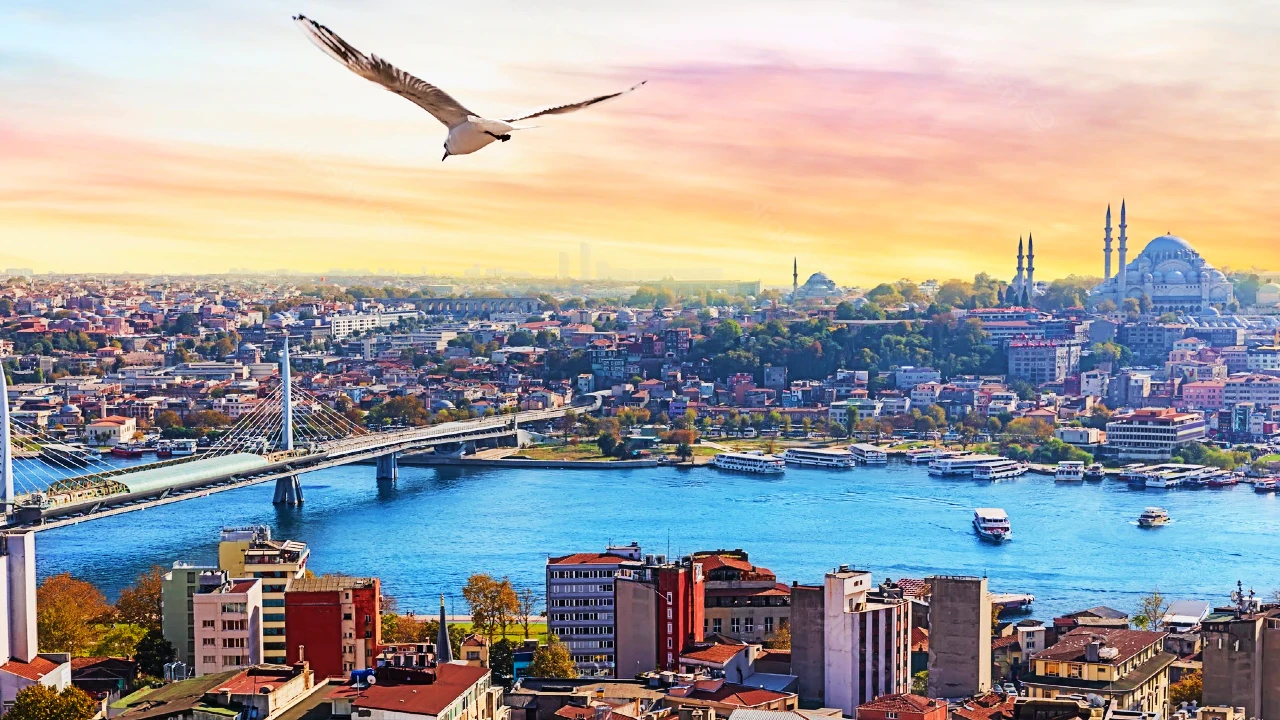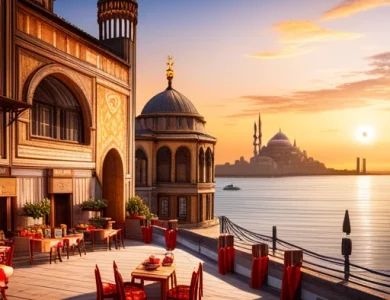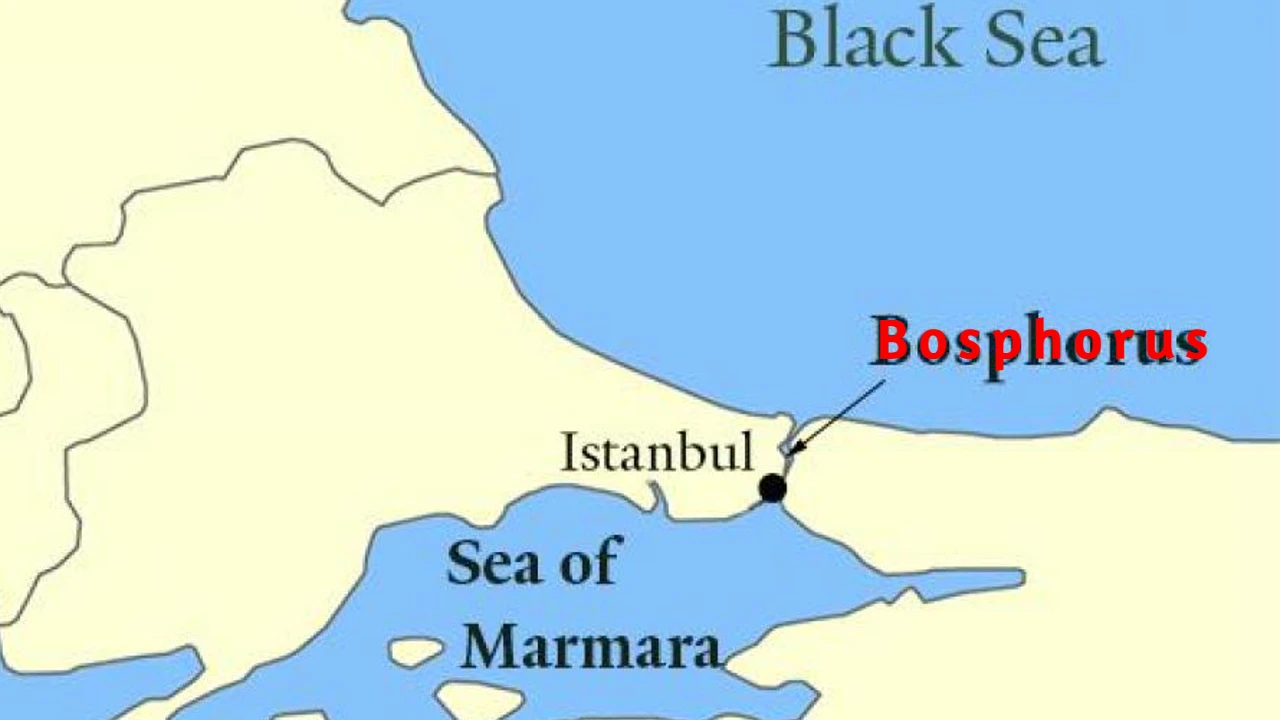
The Bosporus Strait, also known as the Bosphorus, is a natural strait located in Istanbul, Turkey. It connects the Black Sea to the Sea of Marmara and separates Asia and Europe, dividing Turkey into Thrace and Anatolia. The coordinates of the Bosporus are 41°07′10″N 29°04′31″E.
The Bosporus, a natural strait located in Istanbul, Turkey, is a true marvel of nature. Its strategic location between Asia and Europe has made it a crossroads of civilizations throughout the ages. Picture the breathtaking view from the shores as we gaze upon the shimmering waters that gracefully link the Black Sea to the Sea of Marmara. The Bosporus stretches across approximately 31 kilometers (19 miles), revealing its expansive beauty as we navigate its length.
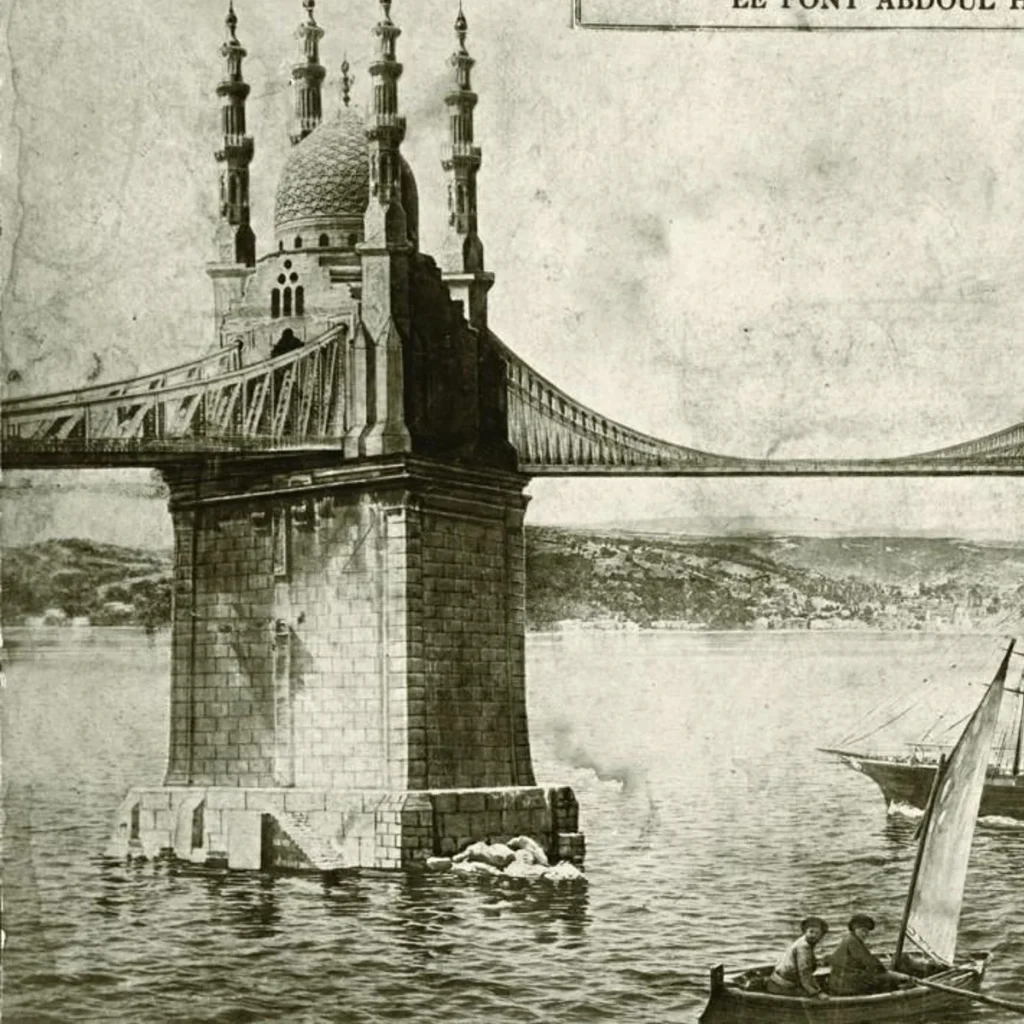
Here are some key facts about the Bosporus:
- Type: The Bosporus is a strait, which is a narrow waterway connecting two larger bodies of water.
- Turkish Straits: The Bosporus, along with the Dardanelles Strait at the opposite end of the Sea of Marmara, is part of the Turkish Straits.
- Basin countries: The Bosporus is located entirely within Turkey.
- Length and width: It has a maximum length of 31 kilometers (19 miles) and a minimum width of 700 meters (2,300 feet).
- Depth: The Bosporus has a maximum depth of 110 meters (360 feet).
- Settlements: Most of the shores of the Bosporus are heavily settled, with Istanbul’s metropolitan population of 17 million extending along both banks.
- Importance: The Bosporus is the world’s narrowest strait used for international navigation and serves as a crucial waterway for maritime connections between the Black Sea, Mediterranean Sea, and Atlantic Ocean.
- Name: The name “Bosporus” comes from the Ancient Greek “Bósporos,” which means “cattle strait” or “cow passage.” It is derived from the mythological story of Io, who crossed the strait in the form of a cow.
- Spelling: While the English spelling is commonly “Bosphorus,” the preferred spelling is “Bosporus” in reference to the ancient Greek name.
- Formation: The exact cause and date of the Bosporus’ formation are still debated among geologists. One hypothesis suggests it was flooded around 5600 BCE due to rising waters breaking through to the Black Sea, which was a low-lying body of fresh water at the time.
- Morphology: The Bosporus has a varied morphology, with its limits defined by lighthouses. It has a maximum width of 3,420 meters (1.85 nautical miles) and a minimum width of 700 meters (0.38 nautical miles).
- Golden Horn: The Golden Horn is an estuary off the main strait that historically served as a moat to protect Constantinople (now Istanbul).
- Underwater Channels: In recent years, underwater channels have been discovered in the Bosporus, referred to as submarine channels. These channels transport sediments to the deep sea, forming sedimentary deposits.
- Villages: The shores of the Bosporus were once lined with small fishing villages that have now become suburbs of Istanbul. Many retain the suffix “-köy” (village) in their names, reflecting their original identities.
- Historical Importance: The Bosporus has always been of great strategic and commercial significance. It has been a focal point in numerous conflicts and wars throughout history, including the Russo-Turkish War in the late 19th century.
A Tale of Two Continents: Thrace and Anatolia
The Bosporus is not just a physical divide between continents but also a symbolic link that unites them. As we sail through its waters, we witness the seamless blend of cultures on either side. To the north lies Thrace, while Anatolia lies to the south. Thrace, the European side, boasts a rich history that echoes the footprints of ancient civilizations. Anatolia, on the other hand, represents the Asian side, home to a vibrant tapestry of cultures and traditions.
Let’s delve deeper into the intriguing history of the Bosporus. The strait has played a pivotal role in shaping the destinies of empires, witnessing the rise and fall of mighty civilizations. Its shores have been witness to the grandeur of the Byzantine Empire, the magnificence of the Ottoman Empire, and the birth of modern Turkey. As we sail along, we catch glimpses of architectural marvels that stand as testaments to this rich heritage.
Istanbul: Where East Meets West
Our journey along the Bosporus would be incomplete without marveling at the splendors of Istanbul, a city that straddles two continents. Istanbul, formerly known as Constantinople, embraces both the Asian and European shores of the Bosporus. Its metropolitan population of 17 million reveals a vibrant and bustling city that has evolved over centuries.
Crossing the Galata Bridge, we find ourselves in the heart of Istanbul’s captivating chaos. The city pulses with life as locals and tourists intermingle, immersing themselves in the vibrant atmosphere. The aroma of Turkish delights, the echoes of the call to prayer, and the vibrant colors of the bustling bazaars awaken our senses, offering a glimpse into the vibrant soul of Istanbul.
Historical Treasures Along the Shores
As we continue our journey, let us marvel at the historical treasures that line the shores of the Bosporus. The legendary Topkapi Palace, once home to the sultans of the Ottoman Empire, stands proudly, whispering tales of grandeur and opulence. Its exquisite architecture and meticulously manicured gardens invite us to step into the world of the sultans and envision their regal lifestyles.
Nearby, the Hagia Sophia, a masterpiece of Byzantine architecture, stands as a testament to Istanbul’s rich historical tapestry. Once a church, then a mosque, and now a museum, this architectural marvel reflects the cultural fusion that defines Istanbul. Stepping inside, we are mesmerized by its vast interior, adorned with awe-inspiring mosaics and towering domes.
Our journey continues, taking us to the magnificent Rumeli Fortress, strategically perched on a hill overlooking the Bosporus. Built by the Ottoman Sultan Mehmed II, this fortress played a crucial role in the historic conquest of Constantinople. Its imposing walls and towers stand as a testament to the military might of the Ottoman Empire, offering panoramic views of the Bosporus and its surrounding landscapes.
Further along the shores, we encounter the iconic Maiden’s Tower, also known as Leander’s Tower. This ancient tower, shrouded in myths and legends, has served as a lighthouse, a military outpost, and even a quarantine station throughout its storied history. Today, it stands as a picturesque landmark, rising from the waters of the Bosporus, capturing the imagination of visitors with its enchanting allure.
As we venture deeper into the Bosporus, we discover the quaint fishing villages that once lined its shores. These villages, now transformed into lively suburbs, have managed to retain their charm and authenticity. Places like Arnavutköy, Bebek, and Ortaköy offer glimpses into the past, with their narrow streets, colorful houses, and traditional markets. The aroma of freshly caught fish wafts through the air, inviting us to savor the flavors of the sea.
Natural Beauty and Serenity
Beyond the historical and cultural landmarks, the Bosporus gifts us with the sublime beauty of its natural surroundings. The lush green hills that embrace its shores provide a stunning backdrop, as if nature itself is part of the grand tableau. We sail past peaceful coves and hidden bays, where the tranquil waters invite us to immerse ourselves in their serenity.
In the springtime, the hillsides burst forth with vibrant hues as wildflowers blanket the landscape, creating a breathtaking tapestry of colors. The cool breeze carries the scent of blossoms, intertwining with the salty sea air. Seagulls soar above, their cries echoing through the sky, adding a touch of wilderness to this urban sanctuary.
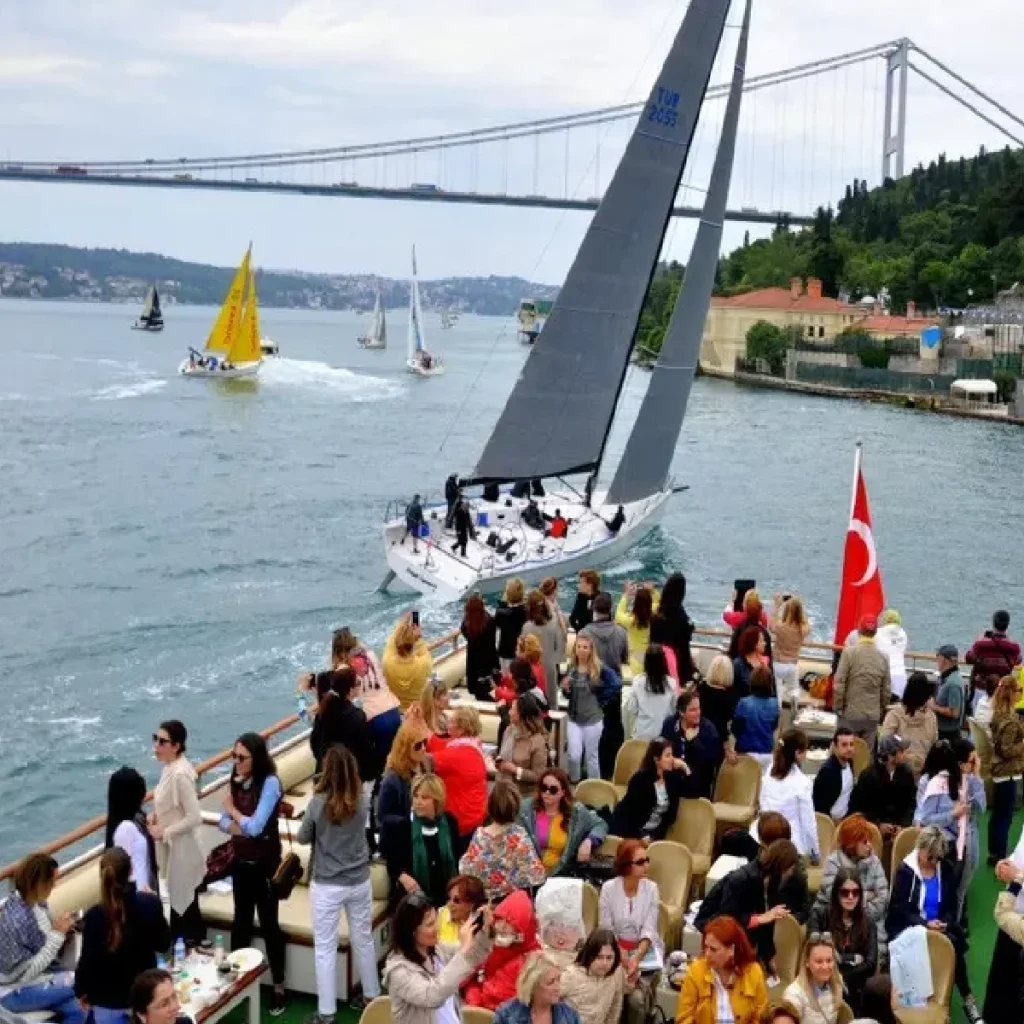
As we traverse the Bosporus, we become aware of the bustling maritime activity that unfolds upon its waters. Majestic cargo ships, elegant cruise liners, and humble fishing boats all share this vital waterway, creating a symphony of movement and commerce. It is awe-inspiring to witness the efficient coordination that takes place, ensuring the smooth flow of goods and the connection of distant lands.
The Bosporus serves as a gateway between the Black Sea and the Mediterranean Sea, acting as a vital link in international maritime trade. It is the world’s narrowest strait used for international navigation, making it a strategic and indispensable waterway for global commerce. Ships from around the world pass through its narrow channel, connecting continents and facilitating the exchange of goods and ideas.
Environmental Significance
While the Bosporus is a testament to human ingenuity and historical significance, it also plays a crucial role in the ecological balance of the region. The underwater channels discovered in recent years, known as submarine channels, contribute to the transport of sediments from the Bosporus to the deep sea, forming sedimentary deposits. These natural processes sustain the delicate marine ecosystem and support the biodiversity of the Black Sea.
Preservation Efforts and Challenges
Preserving the integrity and beauty of the Bosporus is an ongoing endeavor. The increasing urbanization and human activity along its shores present challenges in maintaining the delicate balance between development and conservation. Efforts have been made to protect the natural and cultural heritage of the strait, ensuring its sustainability for future generations to cherish.
Authorities have implemented measures to regulate maritime traffic, maintain water quality, and safeguard the historical structures that adorn the Bosporus. Striking a harmonious balance between the needs of a modern city and the preservation of this natural wonder remains a constant challenge, but one that is crucial for the long-term well-being of Istanbul and the Bosporus itself.
Unveiling the Mysteries: Geology and Formation of the Bosporus
Let us delve deeper into the geological wonders that shape the Bosporus and its formation. The exact cause and date of the Bosporus’ creation have long been a subject of scientific inquiry and debate among geologists. One prevailing hypothesis suggests that around 5600 BCE, rising waters broke through the natural barriers, flooding the region and forming the Bosporus. This event occurred as the Black Sea, a low-lying body of fresh water at the time, experienced a connection to the rising seas.
The geological forces at play in the formation of the Bosporus are awe-inspiring. As we gaze at the strait’s rugged shores, we can envision the tectonic movements that shaped the landscape. The collision of the Eurasian and African plates, combined with the gradual retreat of glaciers, contributed to the creation of this unique passage. Millennia of erosion sculpted the rocky cliffs and shaped the gentle curves that define the Bosporus’ morphology.
The Morphology: A Tapestry of Lighthouses and Varied Widths
The Bosporus reveals a fascinating variety of widths along its course. At its widest point, the strait spans an impressive 3,420 meters (1.85 nautical miles), allowing ample space for vessels to navigate through its waters. However, as we continue our journey, we encounter narrower sections, where the channel narrows to a mere 700 meters (0.38 nautical miles). These narrower stretches add an element of challenge and intrigue to the navigation of this iconic waterway.
To aid mariners in safely traversing the Bosporus, lighthouses stand as beacons of guidance. These architectural gems, strategically placed along the shores, have been guiding ships for centuries. Their flickering lights pierce the darkness, ensuring safe passage through the narrow strait, even in the most treacherous conditions. These lighthouses, like guardians of the sea, stand as testaments to human ingenuity and the symbiotic relationship between land and sea.
A Journey to Remember
As our voyage along the Bosporus nears its end, we reflect upon the memories etched in our hearts and minds. The Bosporus, with its captivating beauty, historical significance, and cultural richness, has truly left an indelible mark on our souls. It is a place where the past meets the present, where legends intertwine with reality, and where the aspirations of mankind are embodied in its shimmering waters.
The Bosporus is more than just a physical strait; it is a gateway to exploration and understanding. It invites us to delve into the depths of history, to witness the convergence of diverse cultures, and to appreciate the harmonious coexistence of nature and human civilization. It is a testament to the resilience of the human spirit and the enduring power of connection.
As we bid farewell to the Bosporus, let us carry with us the lessons learned from this remarkable journey. Let us embrace the spirit of unity and cultural exchange that it embodies, and strive to bridge the divides that separate us. May we cherish and protect the natural wonders that grace our world, for they are a source of inspiration and nourishment for our souls.
So, dear traveler, as you venture forth into your own explorations, remember the Bosporus and the myriad wonders it holds. Whether you have experienced its splendor firsthand or have simply been captivated by its tales, let the spirit of the Bosporus guide you in your quest for knowledge, understanding, and connection. May it inspire you to be a steward of our planet, preserving its treasures for generations to come.
As the sun sets on our virtual journey, know that the Bosporus will forever remain a beacon of beauty, history, and unity. Its waters continue to flow, carrying with them the stories of the past and the dreams of the future. So, until we meet again on another grand adventure, farewell, and may the spirit of the Bosporus be with you always.
FAQs
The Bosphorus, also known as the Bosporus, is a natural strait located in Istanbul, Turkey. It is a narrow waterway that connects the Black Sea to the Sea of Marmara, effectively separating the continents of Europe and Asia. The Bosphorus divides Istanbul into two parts: the European side (Thrace) and the Asian side (Anatolia).
The Bosphorus is approximately 31 kilometers (19 miles) long. It extends from the Black Sea in the north to the Sea of Marmara in the south. The length of the strait has played a significant role in its historical and strategic importance as a major waterway connecting different regions.
The width of the Bosphorus can vary along its course. At its narrowest point near the Rumeli Hisarı fortress, it is approximately 700 meters (2,300 feet) wide. The strait widens in some areas, reaching a maximum width of around 3,420 meters (1.85 nautical miles) near the entrance to the Sea of Marmara.
The Bosphorus holds immense historical, cultural, and strategic importance. It has been a vital trade route and a major transportation corridor for centuries, connecting the Black Sea region to the Mediterranean Sea and beyond. Its strategic location has made it a focal point in numerous conflicts and wars throughout history.
Yes, the Bosphorus is navigable, allowing ships and vessels to pass through. It serves as a crucial waterway for international navigation, facilitating maritime connections between the Black Sea, Mediterranean Sea, and the Atlantic Ocean. However, there are regulations and guidelines in place to ensure safe navigation due to the strait’s narrowness and heavy maritime traffic.
The Bosphorus has a rich historical heritage, with its shores witnessing the rise and fall of various civilizations. It has been a significant location for trade, colonization, and military expeditions throughout history. The strait has played a prominent role in the Byzantine Empire, the Ottoman Empire, and other regional powers, shaping the cultural and political landscape of the region.
es, the Bosphorus is adorned with numerous landmarks and architectural marvels. These include historical sites such as the Hagia Sophia, Topkapi Palace, Dolmabahçe Palace, and the Rumeli Fortress. These landmarks reflect the fusion of Byzantine, Ottoman, and European architectural styles, showcasing the cultural exchange that has taken place along the strait.
Yes, boat tours are a popular way to explore the Bosporus. There are various tour operators in Istanbul that offer guided tours, ranging from short trips to full-day excursions. These tours provide a unique perspective of the strait, allowing you to admire the shoreline, landmarks, and panoramic views of Istanbul from the water.
Yes, there are regulations and permits in place for boating in the Bosporus. The strait is a busy waterway, and it is important to ensure safety and manage the flow of maritime traffic. If you plan to navigate the Bosporus in your own vessel, it is advisable to familiarize yourself with the local regulations and obtain the necessary permits or licenses, if required.
Swimming in the Bosporus is generally not recommended due to strong currents and heavy maritime traffic. The strait is an active waterway with large ships, ferries, and other vessels constantly moving through it. It is safer and more enjoyable to swim in designated swimming areas or beaches along the shores of the Sea of Marmara or the Black Sea.
Yes, there are several viewpoints and landmarks along the Bosporus that offer breathtaking vistas and opportunities for exploration. Some notable ones include the Rumeli Fortress, a historic fortress built by the Ottomans; the Maiden’s Tower, an iconic tower on a small islet; and the Dolmabahçe Palace, a stunning waterfront palace. Additionally, the neighborhoods of Ortaköy, Bebek, and Arnavutköy offer charming streets, waterfront cafes, and picturesque views of the strait.
Yes, some historical sites and landmarks along the Bosporus may have specific visiting hours, entrance fees, and guidelines for visitors. It is advisable to check the official websites or contact the respective authorities beforehand to obtain accurate information regarding visiting hours, ticket prices, and any specific rules or restrictions that may be in place.
While walking along the shores of the Bosporus can be a pleasant experience, it is not possible to explore the entire length of the strait on foot. However, you can explore specific neighborhoods or areas along the Bosporus on foot, such as the lively waterfront promenades in Ortaköy or Bebek. Additionally, there are pedestrian-friendly areas and parks near the shoreline that offer opportunities for leisurely walks with beautiful views.
The Bosporus can be explored throughout the year, but the best time to visit may depend on personal preferences and interests. Spring (April to June) and autumn (September to November) generally offer pleasant weather with milder temperatures and fewer crowds. However, summer (June to August) is a popular time for tourism in Istanbul, and despite the higher temperatures, it can be an exciting time to experience the vibrant atmosphere along the Bosporus.
Yes, there are two iconic bridges that span the Bosphorus: the Bosphorus Bridge (officially called the 15 July Martyrs Bridge) and the Fatih Sultan Mehmet Bridge (commonly known as the Second Bosphorus Bridge). These suspension bridges connect the European and Asian sides of Istanbul, providing important transportation links for both vehicles and pedestrians.
The Bosphorus has a maximum depth of approximately 110 meters (360 feet) in certain areas. However, the depth can vary along different sections of the strait. It is important to note that the depth is not consistent throughout, and there are shallow parts as well.
Why is the Bosphorus important?
The Bosphorus is important because it is a major trade route and a key military defense point. It has played a significant role in the history of Istanbul and the surrounding region, and it is an important cultural and economic hub.
What can visitors do along the Bosphorus?
There are many interesting things to see and do along the Bosphorus, including visiting the Bosphorus Bridge, touring the ancient palaces and mansions that line the shores of the strait, and taking a boat tour to enjoy the stunning views. The Bosphorus is also home to a diverse and vibrant community of people, and visitors can experience the local culture and cuisine by exploring the markets, restaurants, and other local attractions.
What is the history of the Bosphorus?
The Bosphorus has a long and storied history that dates back to ancient times. In the 7th century BC, the Greek city-state of Byzantium was founded on the European side of the Bosphorus, and it eventually became the capital of the Byzantine Empire. The Byzantine Empire was a major maritime power, and the Bosphorus played a crucial role in the empire’s naval operations.
In the 15th century, the Ottoman Empire conquered Constantinople (modern-day Istanbul) and made it the capital of the empire. The Bosphorus became an important trade route for the Ottomans, and it was also used as a defense point against foreign invasions. Today, the Bosphorus is an important shipping route and a major tourism destination.
What is the geography of the Bosphorus?
The Bosphorus is located in Istanbul, Turkey, and it runs through the city, separating the European continent from the Asian continent. It is a natural waterway that connects the Black Sea to the Sea of Marmara, and it is surrounded by the city of Istanbul on both sides. The Bosphorus is approximately 32 kilometers long and varies in width from 700 meters to 3.5 kilometers. It is a narrow and winding strait, and it is known for its strong currents and unpredictable weather.
What are some notable landmarks along the Bosphorus?
There are many notable landmarks along the Bosphorus, including the Bosphorus Bridge, which connects the European and Asian sides of Istanbul, and the Galata Tower, which offers panoramic views of the city. Other notable landmarks include the Dolmabahce Palace, the Ciragan Palace, and the Yildiz Palace. These palaces are beautiful examples of Ottoman architecture, and they are open to the public for tours.
What is the cultural significance of the Bosphorus?
The Bosphorus is a culturally significant place for the people of Istanbul and the surrounding region. It is an important trade route and a key military defense point, and it has played a significant role in the history of Istanbul. The Bosphorus is also home to a diverse and vibrant community of people from all walks of life, and it is an important cultural and economic hub. The Bosphorus is a melting pot of cultures, and it is a place where people from different backgrounds come together to live, work, and play.
How do people use the Bosphorus today?
The Bosphorus is still an important shipping route today, and it is used by both commercial and military vessels. It is also a major tourism destination, and millions of visitors come to Istanbul each year to see the Bosphorus and experience the local culture and history. There are many activities that people can enjoy along the Bosphorus, including sightseeing, boating, and dining at the local restaurants and cafes. The Bosphorus is also a popular destination for photographers, who come to capture the stunning views and landscapes along the strait.
What is the environmental impact of the Bosphorus?
The Bosphorus is a vital waterway that supports a diverse range of marine life and ecosystems. However, the strait is also subject to environmental pressures and threats, such as pollution and overdevelopment. In recent years, there has been a growing concern about the environmental impact of shipping and other human activities on the Bosphorus. To address these issues, the Turkish government and local organizations have implemented a number of measures to protect and preserve the natural beauty of the Bosphorus. These measures include regulations on shipping, waste management, and development, as well as efforts to raise awareness about the importance of preserving the Bosphorus and its ecosystems.
Can people swim in the Bosphorus?
Swimming in the Bosphorus is generally not recommended due to the strong currents and unpredictable weather conditions. The Bosphorus is an important shipping route, and it is also home to a variety of marine life, including fish, crabs, and mussels. Swimming in the Bosphorus can also be dangerous due to the risk of pollution and other hazards. If you are interested in water activities in Istanbul, it is recommended to visit one of the city’s beaches or swimming pools, which are safer and more suitable for swimming.
Is the Bosphorus safe for tourists?
The Bosphorus is generally a safe place for tourists, but as with any destination, it is important to be aware of your surroundings and take precautions to ensure your safety. It is recommended to be cautious when walking along the shores of the Bosphorus, especially at night, and to avoid swimming in the strait due to the strong currents and other hazards.
It is also a good idea to follow the advice of local authorities and your tour operator, and to be mindful of local customs and laws. Istanbul is a vibrant and welcoming city, and the vast majority of visitors have a safe and enjoyable experience when visiting the Bosphorus and other attractions in the city.
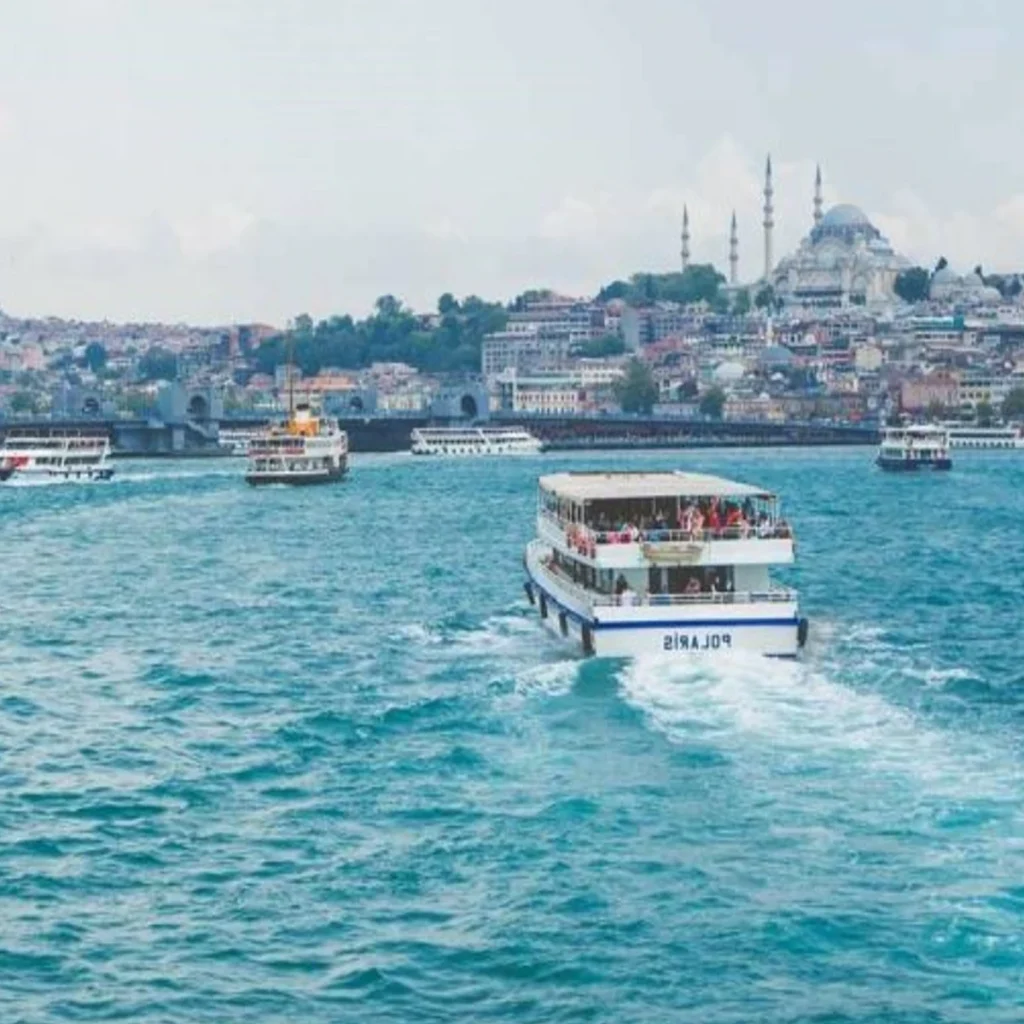
What is the best way to see the Bosphorus?
There are many ways to see the Bosphorus and experience its beauty and history. One of the most popular ways to see the Bosphorus is by taking a boat tour, which allows you to see the stunning views and landmarks along the strait from the water. There are a variety of boat tours available, ranging from short sightseeing cruises to longer excursions that include stops at various points of interest along the Bosphorus. Another way to see the Bosphorus is by walking or biking along the shores of the strait, which allows you to experience the local culture and see the historic mansions and palaces that line the Bosphorus. You can also take a bus or car tour of the Bosphorus, or visit the Bosphorus Bridge, which offers panoramic views of the strait and the city of Istanbul.
How can I plan a trip to the Bosphorus?
To plan a trip to the Bosphorus, you can start by researching the various attractions and activities that are available along the strait. There are many things to see and do along the Bosphorus, including visiting the Bosphorus Bridge, touring the ancient palaces and mansions, and taking a boat tour to see the stunning views. You can also consider the various accommodation options in Istanbul, such as hotels, guest houses, and rental apartments, and choose a location that is convenient to the Bosphorus and other attractions that you want to visit.
It is also a good idea to research the local culture and customs, and to be mindful of any safety concerns that may be specific to Istanbul or the Bosphorus. You can also consider hiring a local tour guide or joining a group tour, which can help you to get the most out of your visit to the Bosphorus and other attractions in Istanbul. Finally, be sure to plan your trip in advance and make any necessary reservations, such as for accommodation and transportation, to ensure that your trip goes smoothly.
Are there any festivals or events held along the Bosphorus?
Yes, there are a number of festivals and events held along the Bosphorus throughout the year. One of the most famous events is the Istanbul International Film Festival, which takes place every April and features screenings of international and Turkish films, as well as special events and workshops. Another popular event is the Istanbul Music Festival, which takes place each summer and features a range of classical, jazz, and contemporary music performances.
Other events that take place along the Bosphorus include the Istanbul Marathon, which is held in November and attracts runners from around the world, and the Istanbul Tulip Festival, which takes place in April and features displays of tulips and other flowers in parks and gardens throughout the city. There are also many local festivals and events that take place along the Bosphorus, such as traditional music and dance performances, art exhibitions, and food festivals.
Can I visit both sides of the Bosphorus in one day?
Yes, it is possible to visit both sides of the Bosphorus in one day. The Bosphorus Bridge, which connects the European and Asian sides of Istanbul, is a major landmark along the strait, and it is a popular tourist destination. The bridge is open to pedestrians and vehicles, and it offers panoramic views of the Bosphorus and the city. You can also take a boat tour or ferry ride along the Bosphorus, which will allow you to see both sides of the strait and visit various points of interest along the way.
If you prefer to stay on land, you can also take a bus or car tour of the Bosphorus, which will allow you to see both sides of the strait and visit various landmarks and attractions. There are many tour operators that offer Bosphorus tours, and you can choose a tour that best fits your interests and schedule.
Is the Bosphorus affected by climate change?
Like many coastal regions around the world, the Bosphorus is vulnerable to the impacts of climate change. The Bosphorus is affected by rising sea levels and more frequent and severe weather events, such as storms and flooding. These impacts can have serious consequences for the local environment, economy, and communities that depend on the Bosphorus.
To address these issues, the Turkish government and local organizations have implemented a number of measures to adapt to and mitigate the impacts of climate change. These measures include the development of early warning systems for extreme weather events, the implementation of flood control and erosion prevention measures, and the promotion of sustainable development practices along the Bosphorus. It is important for all countries and communities to take action to address climate change and protect vulnerable regions like the Bosphorus.
What is the cultural significance of the Bosphorus Bridge?
The Bosphorus Bridge, also known as the First Bosphorus Bridge or the 15 July Martyrs Bridge, is a major landmark along the Bosphorus, and it has significant cultural and historical significance for the people of Istanbul and the surrounding region. The bridge was the first bridge to be built across the Bosphorus, and it was completed in 1973. It is a vital transportation link between the European and Asian sides of Istanbul, and it is an important economic and cultural hub.
The Bosphorus Bridge is also an iconic symbol of modern Turkey, and it is a popular tourist destination. The bridge offers panoramic views of the Bosphorus and the city, and it is a popular spot for sightseeing, photography, and other activities. The bridge is also a popular gathering place for locals and visitors, and it is a place where people come together to enjoy the views and the local culture. The Bosphorus Bridge is an important part of the cultural identity of Istanbul, and it is a place that holds a special place in the hearts of many people.
How has the Bosphorus changed over time?
The Bosphorus has undergone many changes throughout its history. The strait was once a narrow and shallow waterway, and it was used primarily for fishing and transportation. Over time, the Bosphorus has become a major shipping route, and it has been modified and deepened to accommodate larger vessels. The Bosphorus has also been affected by urbanization and development, and many of the natural areas along the strait have been lost to development.
Despite these changes, the Bosphorus remains a vital and beautiful waterway, and it continues to be an important cultural and economic hub. Today, the Bosphorus is a popular tourist destination, and it attracts millions of visitors each year who come to experience the stunning views and rich history of the strait. Despite the changes that have occurred, the Bosphorus remains an iconic and historic landmark that is loved by the people of Istanbul and the surrounding region.
Read More:
Contents
- A Tale of Two Continents: Thrace and Anatolia
- Istanbul: Where East Meets West
- Historical Treasures Along the Shores
- Natural Beauty and Serenity
- Navigating the Bosporus
- Environmental Significance
- Preservation Efforts and Challenges
- Unveiling the Mysteries: Geology and Formation of the Bosporus
- The Morphology: A Tapestry of Lighthouses and Varied Widths
- A Journey to Remember
- FAQs
- Why is the Bosphorus important?
- What can visitors do along the Bosphorus?
- What is the history of the Bosphorus?
- What is the geography of the Bosphorus?
- What are some notable landmarks along the Bosphorus?
- What is the cultural significance of the Bosphorus?
- How do people use the Bosphorus today?
- What is the environmental impact of the Bosphorus?
- Can people swim in the Bosphorus?
- Is the Bosphorus safe for tourists?
- What is the best way to see the Bosphorus?
- How can I plan a trip to the Bosphorus?
- Are there any festivals or events held along the Bosphorus?
- Can I visit both sides of the Bosphorus in one day?
- Is the Bosphorus affected by climate change?
- What is the cultural significance of the Bosphorus Bridge?
- How has the Bosphorus changed over time?
